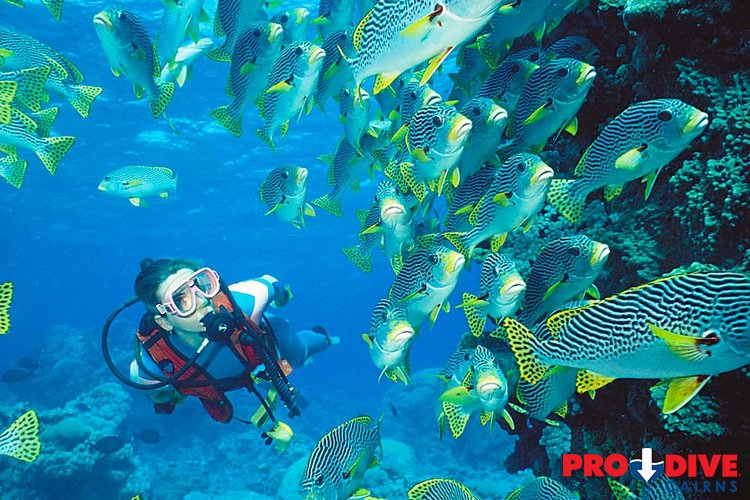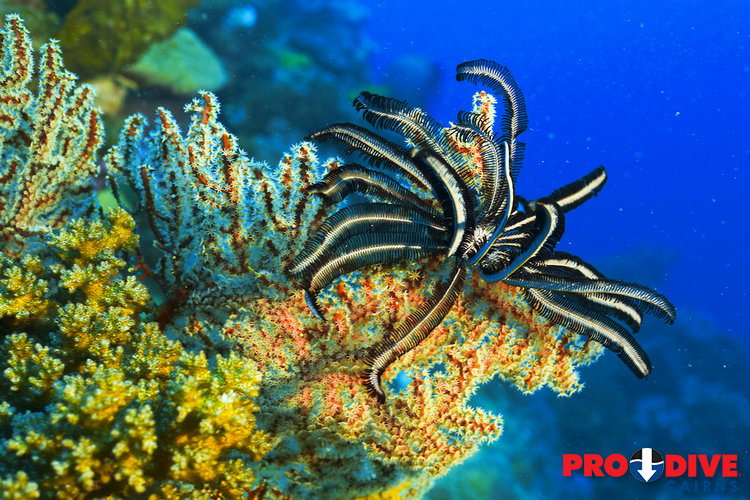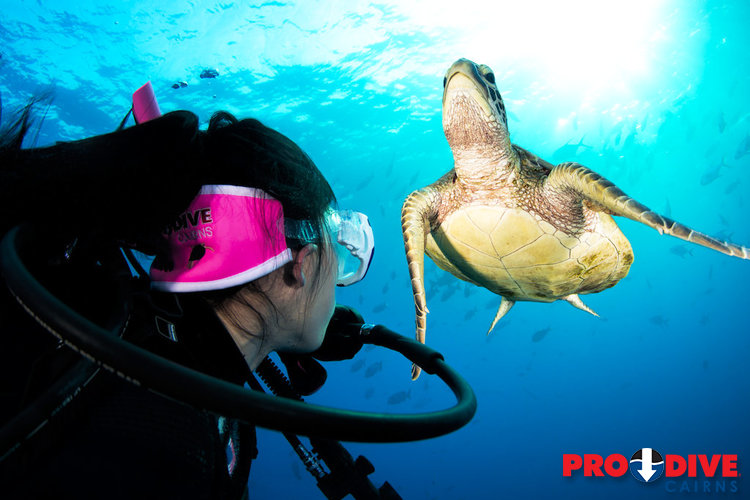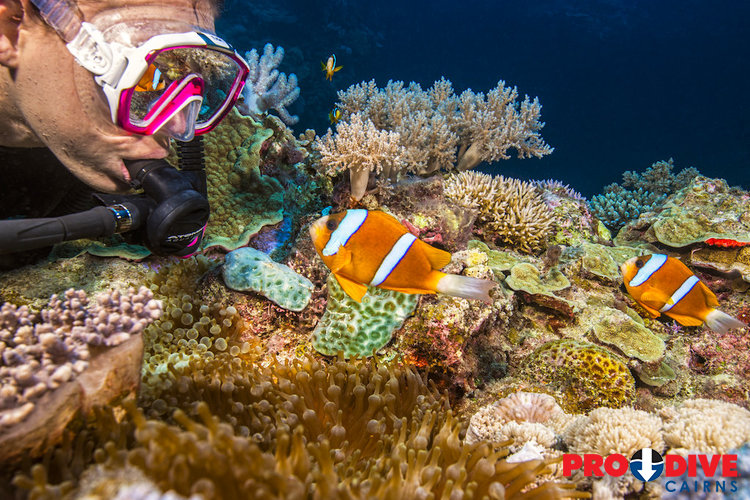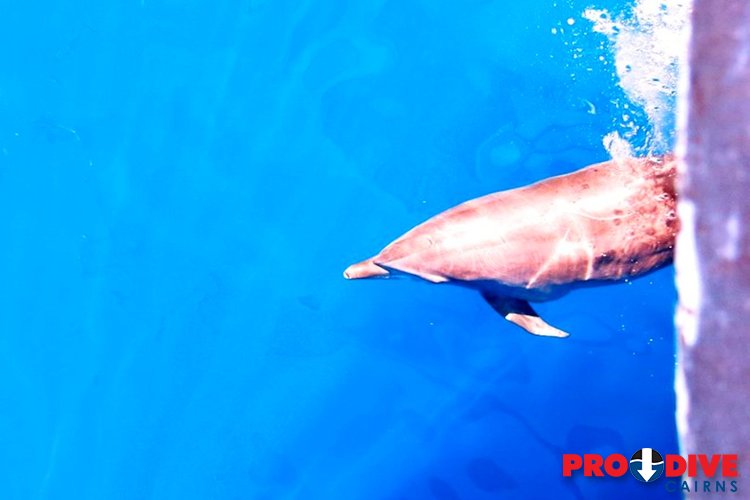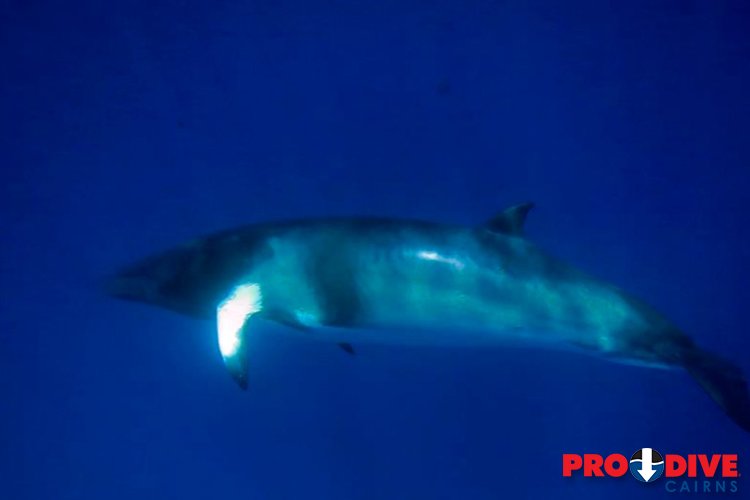- Home
- GBR
Our Incredible Great Barrier reef wonderland
The Great Barrier Reef (GBR) is a natural wonder of the world, renowned for its unique biodiversity and marine life such as corals, turtles, sharks, giant clams and fish. It is part of the Great Barrier Reef Marine Park and has been declared a World Heritage Area.
Pro Dive Cairns operates to 4 reefs (Flynn Reef, Milln Reef, Thetford Reef and Pellowe Reef) of the 2900 that make up the GBR. They are all mid shelf, patch reefs east/north east of Cairns.
The GBR is old
- The present-day structure has developed over the last 18,000 years since the last ice age.
- Before sea levels rose, most of the GBR was land and indigenous Australians used to walk on it to hunt for food.
- The reef you see today is a layer of living tissue on top of a solid base of dead coral which is 18 million years old in the north and 2 million years old in the south.
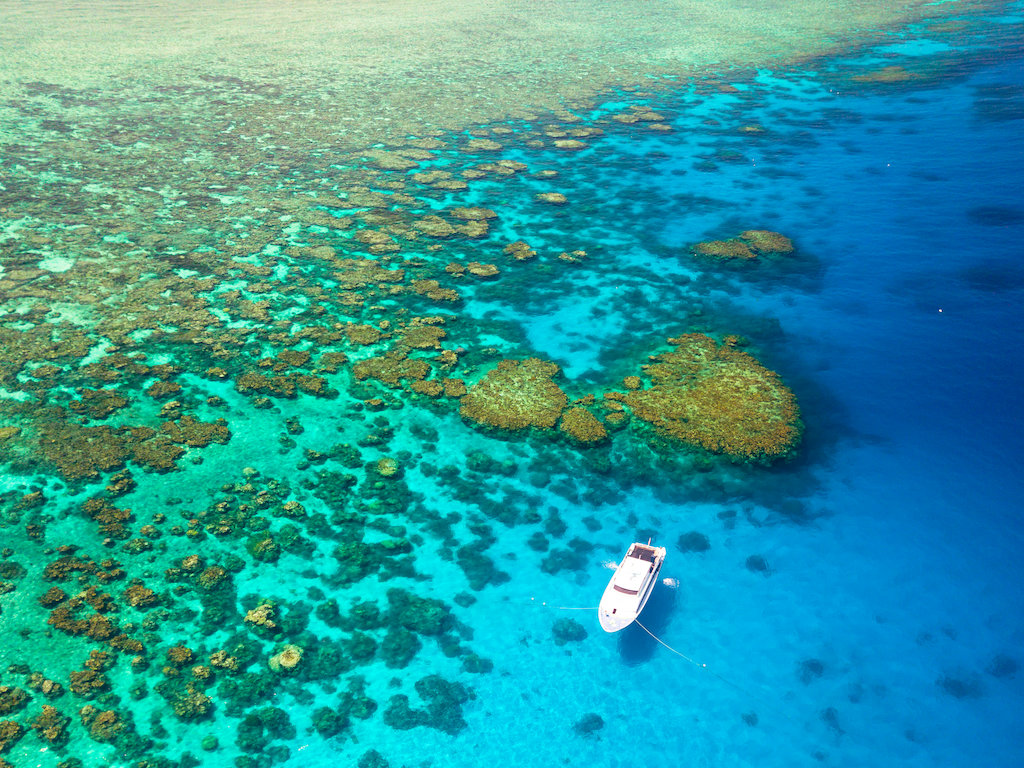
The GBR has high biodiversity
The GBR has some of the highest marine life diversity in the world and is commonly called the rainforest of the sea. It is estimated to have more than three times as many coral and fish types than the reefs of the Caribbean.
These and other plant and animal species live together in a complex, interactive ecosystem. Coral reefs are constantly active during the day and night with animals awake at different times…the city that never sleeps.
The GBR is popular
The GBR supports a large number of industries including tourisim and cruise shipping, commercial fishing, sea cucumber and aquarium fish harvesting, coral rock collecting and aquaculture. In addition, over 4.9 million recreational users utilise the GBR.
About 2 million tourists from around the world visit the GBR each year with one of the 820 permitted commercial operators.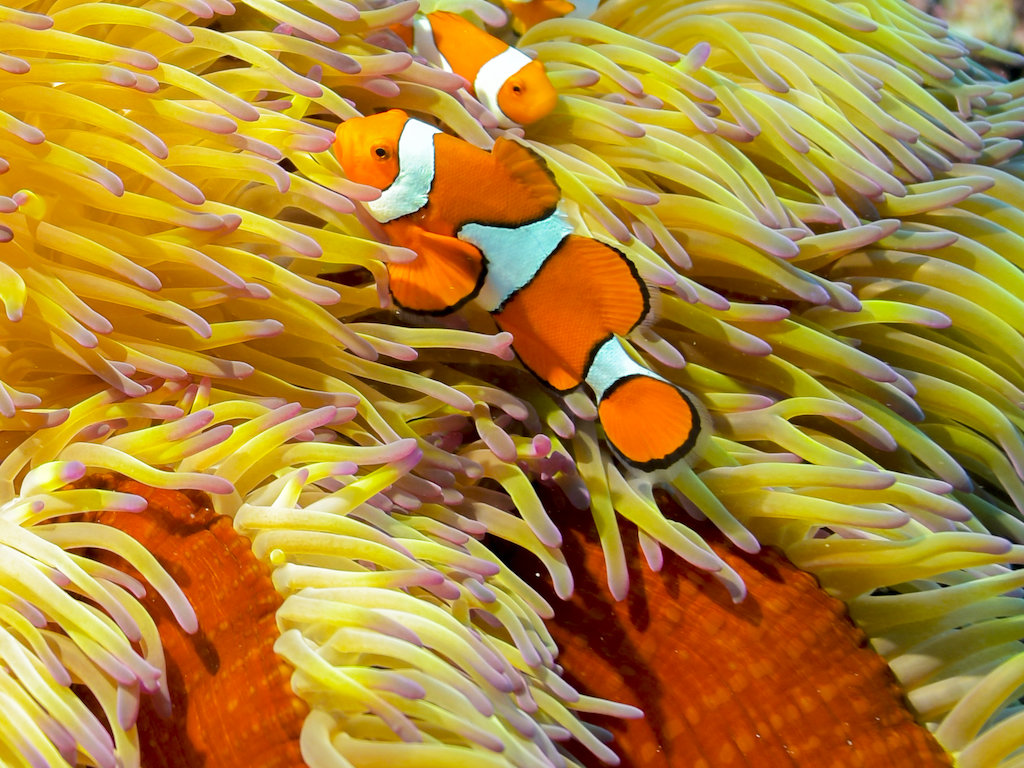
The GBR is under pressure
The health of the GBR is generally good but is under pressure from tourism, fishing, farming, coastal development and land and water pollution. It has suffered damage from mass coral bleaching events, which have been linked to climate change, and outbreaks of Crown of Thorns Starfish (COTS). Populations of dugongs and turtles have declined more than 90% and 50% respectively. This is why it is essential to reduce our impact on the reef as much as possible and encourage others to do the same.
The GBR is protected
The GBR was declared a Marine National Park in 1975 and a World Heritage Area in 1981 to protect its incredible natural, cultural and historical values for generations to come.
The Great Barrier Reef Marine Park is a multiple use Marine Park that means certain activities are not allowed in certain areas. In 2004 1/3 of the reef was declared no take or Green zones in which no extractive activities (such as fishing or collecting) are allowed. Scientific research is already showing that these green zones are increasing the number of fish and other marine life and is also helping protect coral. The Marine Park is managed by the Great Barrier Reef Marine Park Authority. For more information see the GBRMPA website www.gbrmpa.gov.au
What is so unique about the Great Barrier Reef?
- Corals are not plants
- Largest reef structure in the world and can be seen from the moon.
- More than 350 different types of hard coral of the 400 worldwide.
- 90 species of soft coral.
- 1,500 species of fish (there can be up to 200 types of fish in one hectare).
- 6 of the worlds 7 types of turtles.
- 30 types of whales and dolphins.
- 125 types of sharks and rays.
The GBR is huge
- Largest reef structure in the world and can be seen from the moon.
- One of the 7 natural wonders of the world
- It extends over 2,300 km along the coast of Qld from above Cape York to Bundaberg
- Area of over 35 million hectares. This is equivalent to the area of Japan, about 70 million soccer fields, bigger than Tasmania and Victoria combined, half the size of Texas (USA) and bigger than Britain and Ireland combined.
- It is not one single reef but consists of approximately 2900 individual reefs, 300 sand cays (such as Green Island) and 618 continental Islands (which are those that have originated from the mainland such as Fitzroy Island).
High biodiversity:
- More than 350 different types of hard coral of the 400 worldwide.
- 90 species of soft coral.
- 1,500 species of fish (there can be up to 200 types of fish in one hectare).
- 6 of the worlds 7 types of turtles.
- 30 types of whales and dolphins.
- 125 types of sharks and rays.
- As well as dugongs, clams, octopus, sea stars, sea cucumbers, worms, sponges, jellyfish and many more amazing creatures!


